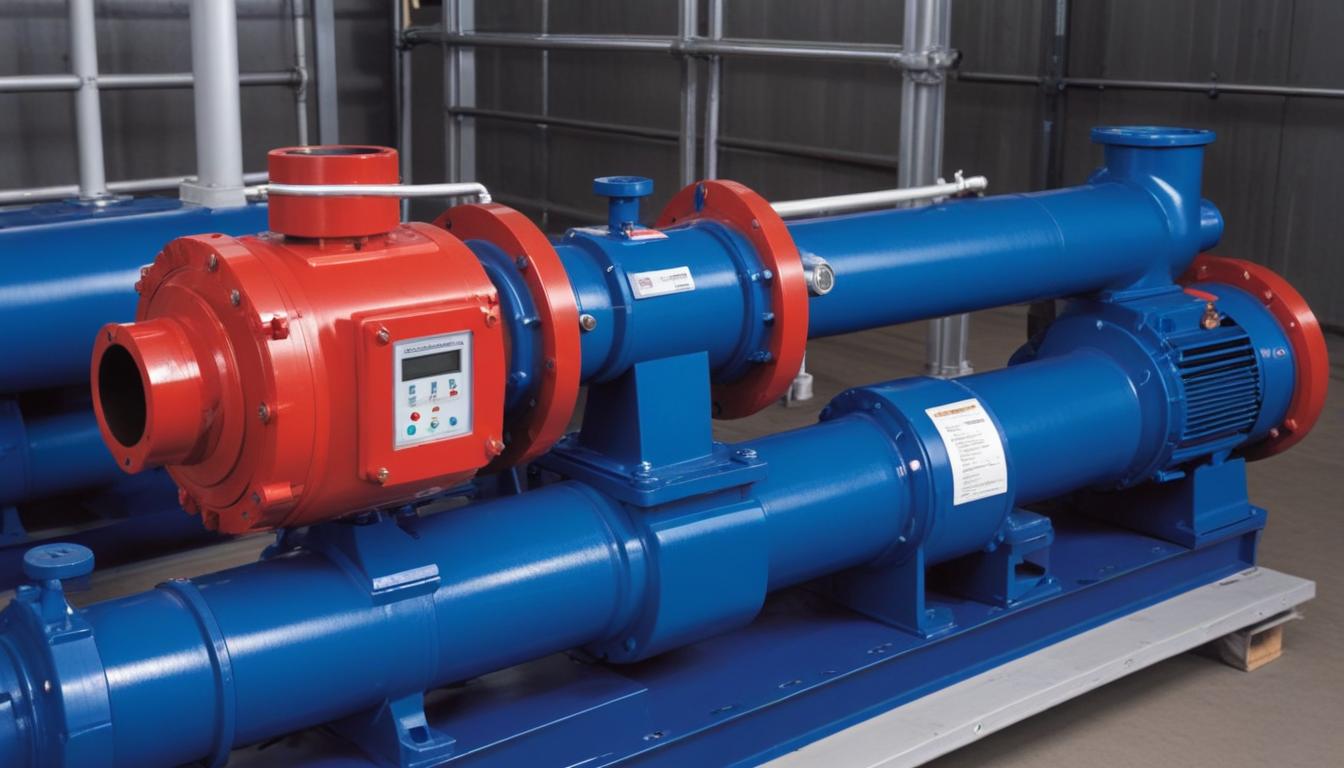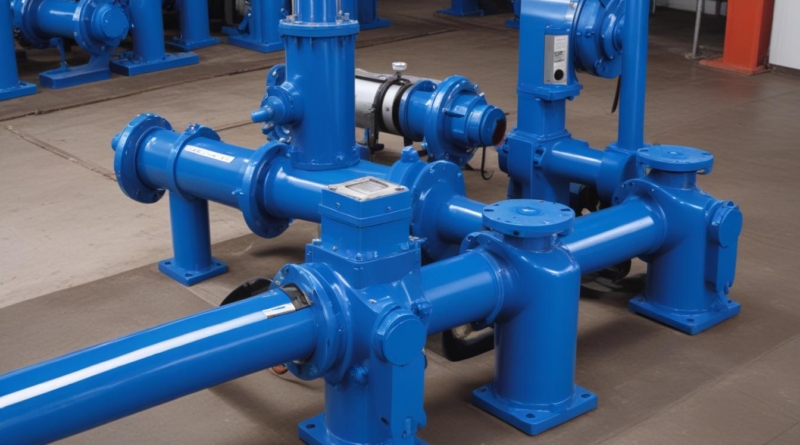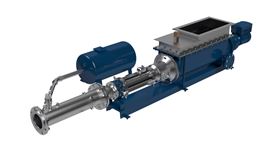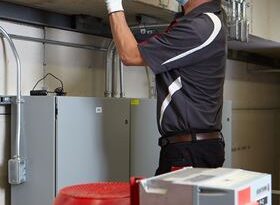Monitoring and control systems for progressive cavity pumps
In the realm of progressive cavity pumps, effective monitoring technologies are crucial for ensuring optimal performance and longevity. These systems utilize various innovative methods to track the operational parameters of pumps, enabling users to respond swiftly to anomalies that may indicate potential failures. Common monitoring technologies include:
- Vibration Analysis: This technique involves measuring the vibration patterns of the pump. Unusual vibrations can indicate mechanical issues, such as misalignment or wear.
- Flow Measurement: Accurate flow measurement ensures that the pump operates within its designed parameters. Deviations can suggest blockages or leaks, prompting immediate investigation.
- Temperature Sensors: Monitoring the temperature of the pump can help detect overheating conditions that might lead to failure. Elevated temperatures often signify excessive friction or operational stresses.
- Pressure Monitoring: Pressure gauges provide critical data about the pump’s operating conditions. Monitoring both inlet and outlet pressure ensures that the pump is performing as intended and can help identify cavitation issues.
Integrating these monitoring technologies within a control system allows for real-time analysis and automated responses to deviations from normal operational parameters. Advanced systems can incorporate predictive analytics, utilizing historical data to forecast potential failures significantly ahead of time.
Implementing a robust monitoring strategy for progressive cavity pumps not only enhances reliability but also facilitates maintenance planning, ultimately prolonging equipment life and improving overall system efficiency. By leveraging real-time data, engineering teams can make informed decisions regarding pump operation and maintenance interventions.
Control strategies for optimizing performance
To optimize the performance of progressive cavity pumps, engineers and operators must employ effective control strategies that consider the dynamic nature of pumping applications. The implementation of advanced control systems can significantly enhance the operational efficiency and reliability of these pumps. One key approach involves the integration of variable speed drives (VSDs), which allow for precise control of pump speed according to flow demands. This flexibility not only saves energy but also reduces wear on the pump and motor by avoiding unnecessary operation under full load conditions during low demand periods.
Furthermore, the use of feedback control mechanisms such as PID (Proportional, Integral, Derivative) controllers can maintain desired performance levels by continuously adjusting pump speed based on real-time data collected from various monitoring technologies. Such controllers can effectively respond to variations in flow or pressure, ensuring that the pump operates within optimal parameters and minimizing the risk of cavitation or throttling.
In addition to VSDs and feedback mechanisms, another innovative control strategy involves the use of model predictive control (MPC). This advanced technique utilizes mathematical models of the pumping system to predict future operational states and optimize control actions accordingly. By anticipating changes in demand or system conditions, MPC can enhance stability and improve overall responsiveness, particularly in complex systems where multiple pumps may need to be coordinated.
Another effective measure is the implementation of automatic control systems that facilitate diagnostics and operational adjustments without manual intervention. Such systems leverage real-time data from monitoring technologies to autonomously adjust pump settings based on predefined thresholds. This not only streamlines operations but also ensures that any potential issues are addressed promptly, thereby reducing downtime and maintenance costs.
Moreover, operational practices like demand-responsive control enable progressive cavity pumps to adapt to fluctuating load requirements in applications such as wastewater treatment and industrial processes. By employing intelligent algorithms that analyze historical consumption patterns, these systems can dynamically adjust their operation based on predicted demand, enhancing resource efficiency while maintaining consistent output.
Implementing these control strategies requires a comprehensive understanding of the operational environment and specific application requirements of the progressive cavity pumps in question. A combination of reliable monitoring systems and sophisticated control mechanisms can lead to substantial improvements in performance, extending the lifespan of the pumps and ensuring that they operate at peak efficiency even under varying conditions.
Data acquisition and analysis techniques

Data acquisition and analysis techniques for progressive cavity pumps are integral to maximizing operational efficiency and ensuring reliable performance. By systematically collecting and analyzing data from various monitoring technologies, engineers can gain valuable insights into the operational health of the pumps. The following techniques are commonly employed:
- Real-Time Data Acquisition: Utilizing sensors integrated with pump systems, real-time data acquisition allows for continuous monitoring of critical parameters such as flow rate, pressure, temperature, and vibration. This data is crucial for immediate decision-making and quick reaction to operational changes.
- Data Logging: Data loggers can store historical performance data, enabling engineers to analyze trends over time. This long-term perspective helps in identifying patterns that may predict potential issues before they escalate into failures.
- Automated Reporting Systems: These systems can generate regular reports that summarize pump performance metrics, highlighting deviations from acceptable ranges. Such reports facilitate timely maintenance and operational adjustments.
Once data is collected, various analysis techniques can be employed:
- Statistical Analysis: Statistical methods can help identify the effectiveness of pump operation. Employing techniques such as regression analysis allows engineers to discern the relationships between different operational parameters and performance outcomes.
- Predictive Analytics: By applying machine learning algorithms to historical data, predictive analytics can forecast potential failures and downtime based on identifiable patterns. This proactive approach minimizes unexpected equipment failures and enhances maintenance planning.
- Root Cause Analysis: In cases of operational anomalies, root cause analysis assists in identifying underlying issues that may not be immediately evident. This involves systematic investigation into the data trends, assisting engineers in implementing corrective measures effectively.
| Data Type | Purpose | Benefit |
|---|---|---|
| Flow Rate | Monitor the volume of fluid being pumped. | Ensure the pump operates within specified limits to prevent overload or underloading. |
| Pressure | Assess inlet and outlet pressure levels. | Detect potential cavitation and ensure system integrity. |
| Temperature | Evaluate heat levels during operation. | Avoid overheating that can lead to pump failure. |
| Vibration | Identify mechanical irregularities. | Prolong pump life by addressing alignment and wear issues early. |
Implementing robust data acquisition and analysis techniques fosters a comprehensive understanding of progressive cavity pump behavior, enabling operators to optimize their monitoring and control systems. The synergetic use of these techniques ultimately drives operational efficiency, reliability, and longevity of the pumping systems.
Maintenance practices for reliable operation
Regular maintenance practices are vital for ensuring the reliable operation of progressive cavity pumps. These pumps, known for their ability to handle viscous and abrasive fluids, require a proactive approach to maintenance to avoid unexpected failures and downtime. Implementing a structured maintenance regime not only extends the life of the pumps but also enhances their operational efficiency. Essential maintenance practices include:
- Routine Inspections: Conducting periodic inspections allows technicians to identify potential problems before they escalate. Inspections should focus on key components such as seals, stators, and rotors for wear and degradation.
- Lubrication Maintenance: Proper lubrication is crucial for minimizing friction between moving parts. Selecting the right lubricant and ensuring adequate application intervals can significantly reduce wear and prolong equipment life.
- Alignment Checks: Misalignment can lead to increased vibration and accelerated wear. Regular alignment checks are necessary to ensure that all components are correctly positioned, thus optimizing the pump’s performance.
- Seal and Stator Replacement: The seals and stators in progressive cavity pumps are subject to wear due to constant friction and pressure. Developing a replacement schedule based on the operating environment and history of use helps to maintain pump efficiency and prevent leaks.
Implementing predictive maintenance techniques, which leverage data from monitoring and control systems, can further enhance maintenance practices. This approach utilizes real-time data analysis to predict when maintenance activities should occur based on actual equipment condition rather than fixed schedules. Techniques include:
- Condition Monitoring: Utilizing vibration analysis, temperature measurement, and flow monitoring to assess pump condition. This data helps in scheduling maintenance operations only when necessary, thereby optimizing downtime.
- Trend Analysis: Collecting and analyzing historical performance data can help identify patterns that signify wear and degradation. By recognizing early signs of deterioration, maintenance can be performed before a failure occurs.
- Risk-Based Maintenance: This strategy prioritizes maintenance efforts based on the criticality of equipment and the risks associated with potential failures. It allows resources to be allocated effectively, focusing on pumps that present the highest risk to operations.
A comprehensive training program for operational staff is also an essential component of maintenance practices. Providing engineers and technicians with the knowledge and skills to recognize potential issues and perform routine checks ensures that the pumps are maintained to high standards. Regular workshops and training sessions on best practices in monitoring and control systems for progressive cavity pumps can promote a culture of proactive maintenance within the organization.
Moreover, implementing a centralized maintenance management system can streamline the maintenance workflow. This system should track maintenance schedules, inspection reports, and performance data to facilitate effective oversight and historical record-keeping. Such systems can also automate reporting, ensuring that all aspects of pump maintenance are documented and easily accessible.
Ultimately, the key to reliable operation of progressive cavity pumps lies in the integration of effective monitoring and maintenance practices, complemented by a robust understanding of the pump’s operational environment. Employing these strategies will ensure that pumps perform at peak efficiency while minimizing unplanned downtime and maintenance costs.
Future trends in pump monitoring and control systems

As the industry continues to evolve, the future of monitoring and control systems for progressive cavity pumps is poised for transformative advancements. Emerging technologies and methodologies promise to enhance operational efficiency, predictive maintenance capabilities, and overall performance. One key trend involves the integration of Internet of Things (IoT) devices, which facilitate seamless connectivity and communication among pump systems. This connectivity enables real-time data access and analysis, allowing engineers to monitor pump conditions remotely and respond instantly to potential issues.
In conjunction with IoT, cloud computing is set to revolutionize the landscape of pump management. By utilizing cloud platforms for data storage and processing, operators can harness vast amounts of operational data for advanced analytics. This approach leverages the scalability of cloud services to accommodate the growing data needs of monitoring systems while providing robust tools for data analysis and visualization. Such capabilities will enable users to implement more sophisticated algorithms for trend analysis, ultimately leading to enhanced decision-making processes.
Artificial intelligence (AI) and machine learning (ML) will also play a crucial role in the future landscape of monitoring and control systems. By employing AI algorithms, these systems can analyze historical performance data and identify patterns that may go unnoticed by traditional analysis methods. Machine learning techniques will enable predictive maintenance solutions to become increasingly accurate, facilitating proactive interventions before failures occur. For instance, algorithms can learn from previous failures and continuously improve their ability to predict when components might require maintenance, ensuring uninterrupted operations.
Another anticipated trend is the development of digital twins for progressive cavity pumps. A digital twin is a virtual representation of a physical asset, utilizing real-time data to simulate its performance. By creating a digital twin of a pump system, operators can run simulations to assess how different operating conditions may impact performance, allowing for informed adjustments before they are enacted in the physical environment. This technology will also facilitate more efficient training for technicians, as they can visualize the pump’s operations and understand its mechanics without the risks associated with working on live equipment.
Furthermore, advancements in data visualization tools will enable engineers to interpret complex data more effectively. Enhanced dashboards designed for monitoring progressive cavity pumps will highlight critical performance indicators and anomalies, providing insights at a glance. This immediacy allows for quicker responses to deviations, optimizing operational performance and reducing the risk of downtime.
Finally, as environmental regulations become increasingly stringent, the development of sustainable pump technologies will move to the forefront. Future monitoring and control systems will not only focus on maintaining pump reliability and performance but also emphasize energy efficiency and minimized environmental impact. Innovations such as energy-harvesting systems and smart sensors that optimize energy consumption in real-time will further the trend toward sustainability in pump operations.
The evolution of monitoring and control systems for progressive cavity pumps will be driven by advancements in connectivity, analytics, and sustainability. These innovations are expected to significantly enhance the operational resilience and capability of pumping systems, ensuring they meet the growing demands of diverse industries while maintaining optimal operational standards.




